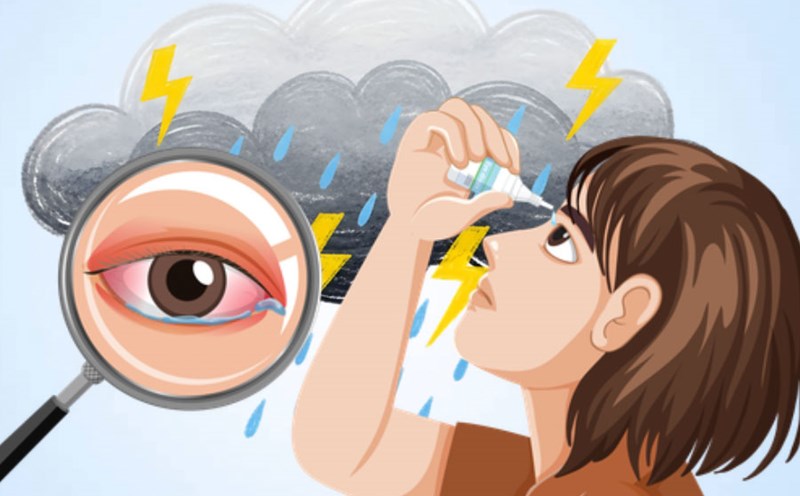In modern life, most of us spend many hours in front of a screen, from phones, computers to TVs. Continuous use of digital devices not only causes temporary headaches or fatigue, but also puts prolonged pressure on the eyes, increasing the risk of premature aging and vision problems.
The impact of using too much screen
According to Dr. Shrey Kumar Srivastav, Senior Consultant and General Practitioner, Sharda Hospital, Noida (India), digital eye strain syndrome (CVS) is a condition of eye strain caused by prolonged exposure to screens. Although it does not cause permanent damage, symptoms such as eye pain, blurred vision or difficulty concentrating can appear if the eyes are too active:
Few blinkers: When you focus on a screen, you may blink less, leading to dry, red eyes and easily irritated eyes.
Stretched eye muscles: The muscles that focus on continuously contracting to look at the screen, seemingly holding a tense position throughout the day, cause temporary eye strain and blurred vision.
Green light: The screen that emits green light can make the eyes tired and affect sleep, indirectly affecting overall health.
Warning signs of tired eyes
Doctor Shrey Kumar Srivastav shares points to note when the following symptoms appear:
Eye pain, burning, or prolonged fatigue
blurred vision or double vision, especially when shifting focus from near to far
Headache, neck and shoulder strain due to the screen-watching pose
Sensitive to bright light
These signs show that your eyes need to rest and adjust your device usage habits.
How to protect your eyes in the digital age
Some simple habits can help reduce pressure on the eyes:
20-20-20-20 rule: Every 20 minutes, look at an object about 6 meters away for at least 20 seconds to relax the eye muscles.
Optimizing the workspace: Place a screen one arm away from the eyes, above the eye level or lower; adjust the brightness to suit the room lighting.
Regular blinking: Remind yourself to blink more to keep your eyes moist.
Eye training: mov your vision from a near object to a distant object to increase flexibility and endurance for the eye muscles.
Regular eye check-ups: If symptoms persist, see an ophthalmologist for a vision check, use anti-glare glasses or remove potential problems.
Take care of yourself: Rest, walk, read or close your eyes for a few minutes a day to reduce eye and mental pressure.
Note
Using digital devices is inevitable, but you can protect your eyes with simple and proactive habits. Recognizing signs of stress, taking proper rest and arranging a scientific working environment will help maintain long-term vision and reduce the risk of premature eye aging.











